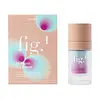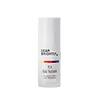What's inside
What's inside
 Key Ingredients
Key Ingredients

 Benefits
Benefits

 Concerns
Concerns

 Ingredients Side-by-side
Ingredients Side-by-side

Water
Skin ConditioningGlycerin
HumectantTriolein
Skin ConditioningCoco-Caprylate/Caprate
EmollientGlyceryl Stearate Se
EmulsifyingCaprylic/Capric Triglyceride
MaskingOenothera Biennis Oil
EmollientSqualane
EmollientLimnanthes Alba Seed Oil
Skin ConditioningButylene Glycol
HumectantCeramide NP
Skin ConditioningGlyceryl Dioleate
EmollientPropanediol
SolventVitis Vinifera Seed Oil
EmollientBorago Officinalis Seed Oil
EmollientCetearyl Olivate
Pentylene Glycol
Skin ConditioningRetinyl Palmitate
Skin ConditioningSorbitan Olivate
EmulsifyingPolyacrylate Crosspolymer-6
Emulsion StabilisingSodium Hyaluronate
HumectantXanthan Gum
EmulsifyingCetyl Alcohol
EmollientPhenethyl Alcohol
MaskingSodium Benzoate
MaskingDisodium EDTA
Sodium Lactate
BufferingCarbomer
Emulsion StabilisingLinoleic Acid
CleansingPhospholipids
Skin ConditioningPhytosterols
Skin ConditioningPolysorbate 20
EmulsifyingT-Butyl Alcohol
PerfumingTocopherol
AntioxidantPalmitoyl Tripeptide-1
Skin ConditioningPalmitoyl Tetrapeptide-7
Skin ConditioningWater, Glycerin, Triolein, Coco-Caprylate/Caprate, Glyceryl Stearate Se, Caprylic/Capric Triglyceride, Oenothera Biennis Oil, Squalane, Limnanthes Alba Seed Oil, Butylene Glycol, Ceramide NP, Glyceryl Dioleate, Propanediol, Vitis Vinifera Seed Oil, Borago Officinalis Seed Oil, Cetearyl Olivate, Pentylene Glycol, Retinyl Palmitate, Sorbitan Olivate, Polyacrylate Crosspolymer-6, Sodium Hyaluronate, Xanthan Gum, Cetyl Alcohol, Phenethyl Alcohol, Sodium Benzoate, Disodium EDTA, Sodium Lactate, Carbomer, Linoleic Acid, Phospholipids, Phytosterols, Polysorbate 20, T-Butyl Alcohol, Tocopherol, Palmitoyl Tripeptide-1, Palmitoyl Tetrapeptide-7
 Reviews
Reviews

Alternatives
Ingredients Explained
These ingredients are found in both products.
Ingredients higher up in an ingredient list are typically present in a larger amount.
Glycerin is already naturally found in your skin. It helps moisturize and protect your skin.
A study from 2016 found glycerin to be more effective as a humectant than AHAs and hyaluronic acid.
As a humectant, it helps the skin stay hydrated by pulling moisture to your skin. The low molecular weight of glycerin allows it to pull moisture into the deeper layers of your skin.
Hydrated skin improves your skin barrier; Your skin barrier helps protect against irritants and bacteria.
Glycerin has also been found to have antimicrobial and antiviral properties. Due to these properties, glycerin is often used in wound and burn treatments.
In cosmetics, glycerin is usually derived from plants such as soybean or palm. However, it can also be sourced from animals, such as tallow or animal fat.
This ingredient is organic, colorless, odorless, and non-toxic.
Glycerin is the name for this ingredient in American English. British English uses Glycerol/Glycerine.
Learn more about Glycerin